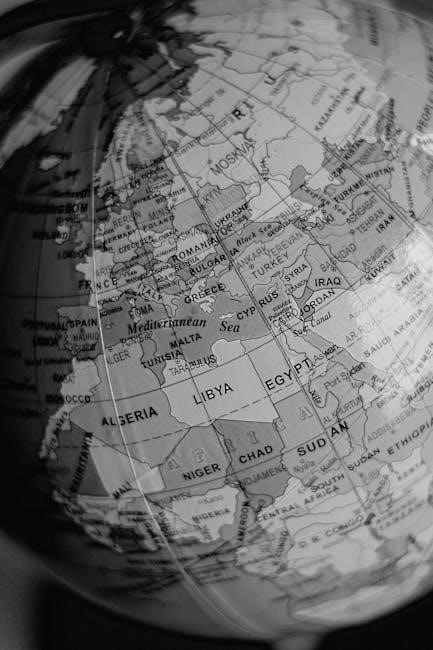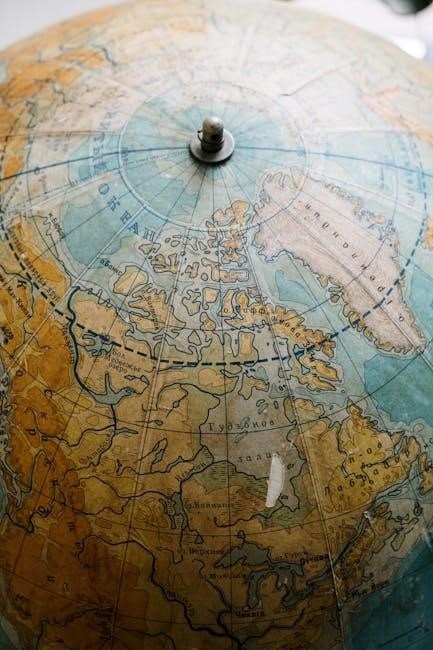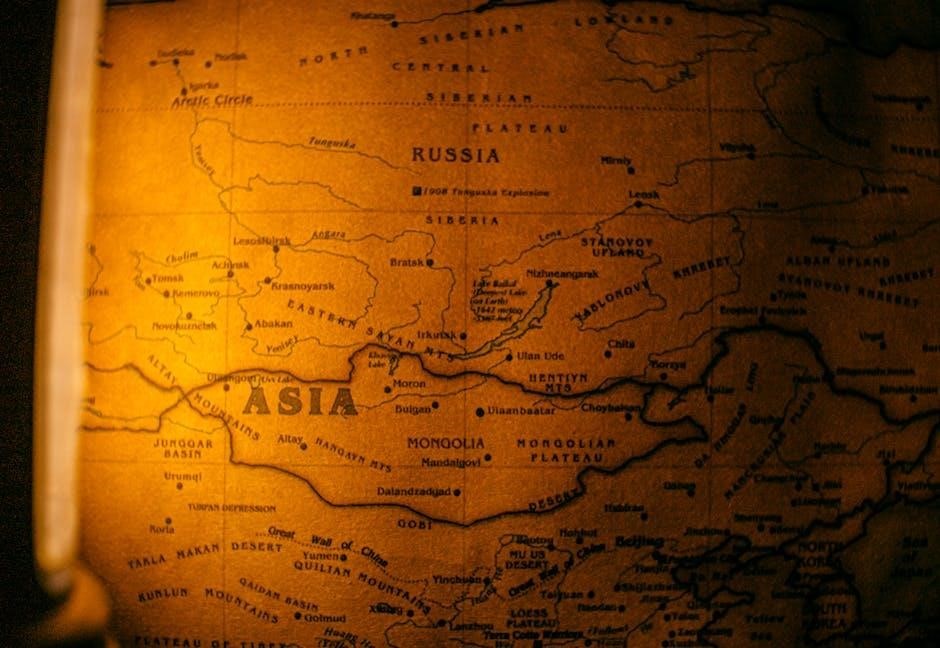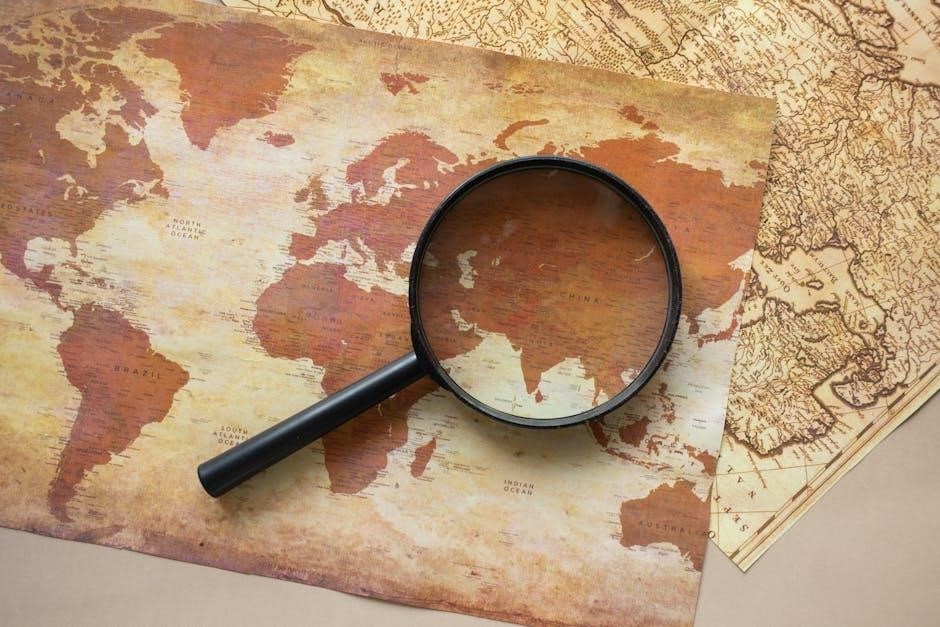Ancient Civilizations and Their Legacies

Explore the rise of early societies, their belief systems, and enduring contributions to modern culture․ Key topics include polytheism, monotheism, and reincarnation, as well as the legal innovations of Hammurabi’s Code and its lasting impact․
1․1․ Major Belief Systems: Polytheism, Monotheism, and Reincarnation
Understand the differences between polytheistic and monotheistic religions, their practices, and how reincarnation shaped ancient philosophies, influencing future spiritual movements and cultural norms․
1․2․ Key Contributions of Mesopotamia: Hammurabi’s Code
Discover Hammurabi’s Code, one of the earliest legal systems, and its significance in establishing laws, punishments, and social order, setting a precedent for future civilizations․

Polytheism, the belief in multiple deities, was common in ancient civilizations like Egypt, Greece, and Rome, where gods represented natural forces and human experiences․ Monotheism, in contrast, emphasized a single, all-powerful deity, as seen in Judaism, Christianity, and Islam, shaping ethical and moral frameworks․ Reincarnation, central to Hinduism and Buddhism, posited the soul’s rebirth based on karma, influencing cycles of life and spiritual liberation․ These systems not only defined religious practices but also shaped cultural norms, laws, and societal structures․ Understanding these belief systems is crucial for tracing their evolution and impact on modern religious and philosophical thought․ Polytheism fostered diversity in worship, while monotheism often unified communities under a single divine authority․ Reincarnation, meanwhile, emphasized moral accountability and the pursuit of enlightenment, leaving lasting legacies in global spirituality and ethics․ These concepts remain foundational to world history, illustrating humanity’s enduring quest for meaning and purpose․
Hammurabi’s Code, established by the Babylonian king Hammurabi around 1754 BCE, is one of the earliest surviving legal codes․ It was inscribed on a stele, a stone slab, and served as a public display of law, ensuring justice and order in society․ The code introduced the principle of “an eye for an eye, a tooth for a tooth,” establishing retributive justice․ It covered various aspects of life, including trade, marriage, property rights, and criminal punishments, reflecting the social and economic structures of Mesopotamia․ The code also demonstrated a class-based system, where punishments varied depending on the social status of the victim and offender․ Hammurabi’s Code is significant as it laid the foundation for future legal systems, emphasizing written laws and standardized penalties․ Its influence can be seen in later legal traditions, making it a cornerstone of legal history and a testament to Mesopotamia’s contributions to civilization․ This code remains a vital topic in world history, illustrating the development of law and governance in ancient societies․

The Medieval Period: Feudalism and the Crusades
Feudalism shaped medieval society, creating a hierarchical structure of lords, vassals, and peasants․ The Crusades, religious wars over the Holy Land, reflected political, religious, and economic motives, deeply impacting medieval history․
2․1․ The Structure of Feudal Society
Feudal society was a hierarchical system where land ownership and obligations defined social classes․ At the top was the king, who granted land to nobles and vassals in exchange for loyalty and military service․ Peasants, including serfs, worked the land and provided labor, while the church held significant influence and land․ The feudal pyramid was rigid, with each class bound by duties to those above and responsibilities to those below․ This system provided stability but limited social mobility․ Lords offered protection, while vassals pledged allegiance, creating a network of dependencies․ The manorial system, where serfs lived and worked on lord-owned estates, was central to the economy․ Feudalism shaped medieval life, influencing politics, economy, and culture, leaving a lasting legacy in European history․
- King: The ultimate authority, granting land to nobles․
- Nobles and Vassals: Held land in exchange for loyalty and service․
- Peasants/Serfs: Worked the land, providing labor and goods․
- The Church: A powerful landowner with religious and social influence․
2․2․ Causes and Consequences of the Crusades

The Crusades were a series of religious conflicts initiated by the Catholic Church, primarily to reclaim the Holy Land from Muslim rule․ Key causes include religious zeal, political motivations, and economic interests․ The First Crusade began in 1096, sparked by Pope Urban II’s call to arms․ Over two centuries, these campaigns led to significant consequences, including the massacre of non-Christians, the destruction of cultural sites, and the exchange of ideas between East and West․ The Crusades also weakened the Byzantine Empire and led to the rise of Muslim unity․ In Europe, they fostered a sense of shared identity and spurred technological and cultural advancements․ However, they also sowed seeds of religious tensions that persisted for centuries․ The Crusades remain a pivotal and complex chapter in world history, shaping religious, political, and social dynamics across the globe․
- Religious Zeal: Desire to reclaim sacred sites for Christianity․
- Political Motivations: Leaders sought power and control․
- Economic Interests: Access to trade routes and resources․

Early Modern History: Revolutions and Their Impact
Explore the transformative revolutions of the early modern period, including the American, French, and Industrial Revolutions․ These movements challenged traditional systems, spread Enlightenment ideas, and reshaped global politics, economies, and societies․

3․1․ The Industrial Revolution and Its Effects on Global Trade
The Industrial Revolution, spanning the late 18th to early 19th centuries, was a transformative period marked by technological innovations and mass production․ Key developments included the steam engine, factories, and mechanized agriculture, which revolutionized industries and societies․
- These advancements led to increased efficiency, lower production costs, and higher output, enabling nations to produce more goods for both domestic consumption and export․
- The expansion of global trade was further facilitated by improved transportation, such as railways and steamships, which reduced travel time and increased the reliability of international commerce․
- The telegraph also played a crucial role by enabling rapid communication, streamlining business transactions across vast distances․
- However, the Industrial Revolution also created significant inequalities, as industrialized nations exploited raw materials from colonies, deepening global economic disparities․
This era laid the foundation for modern global trade systems, shaping economic interdependence and the rise of industrialized powers․

Modern World History: World Wars and Their Aftermath
Examine the causes, key events, and profound impacts of World Wars I and II․ Analyze the Treaty of Versailles, the rise of fascism, and the Holocaust․ Understand post-war reorganization, the Cold War, and decolonization․
4․1․ The Four Causes of World War I
The four main causes of World War I were militarism, alliances, imperialism, and nationalism․ Militarism refers to the buildup of military forces and the glorification of war, which created tensions among European nations․ Alliances divided Europe into two opposing groups: the Triple Entente (France, Britain, Russia) and the Triple Alliance (Germany, Austria-Hungary, Italy), making a small conflict potentially catastrophic․ Imperialism fueled competition for colonies and resources, heightening rivalries, particularly between Britain and Germany․ Lastly, nationalism intensified pride and aggression, as nations prioritized their interests over diplomacy․ These factors created a volatile environment, and the assassination of Archduke Franz Ferdinand in 1914 served as the trigger, plunging Europe into war․ Understanding these causes is crucial for grasping how a localized conflict escalated into a global catastrophe․
4․2․ The Spark That Lit the Powder Keg of World War I

The immediate cause of World War I was the assassination of Archduke Franz Ferdinand, heir to the Austro-Hungarian throne, in Sarajevo on June 28, 1914․ Gavrilo Princip, a Serbian nationalist affiliated with the Black Hand group, carried out the assassination․ This event triggered a chain reaction of diplomatic crises and military mobilizations across Europe․

The assassination occurred amid heightened tensions in the Balkans, where Serbia sought independence from Austria-Hungary․ Austria-Hungary, supported by Germany, issued an ultimatum to Serbia, which Serbia partially rejected․ This led Austria-Hungary to declare war on Serbia, prompting Russia to mobilize in support of Serbia, followed by Germany declaring war on Russia and France․ Britain entered the conflict after Germany invaded Belgium, a neutral state․
This single event, combined with the complex system of alliances and nationalist sentiments, escalated into a global conflict, marking the beginning of World War I․ The assassination symbolized the volatile state of Europe at the time, ready to explode into war over a single incident․
